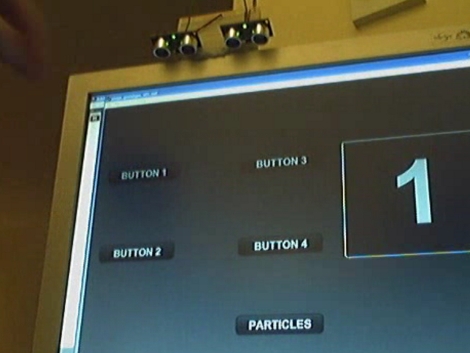
This touch screen relies on measurements from two range finders to track your finger as you press buttons. [James Alliban] put this together as his first Arduino project. We’re familiar with [James’] background because of his informative augmented reality business card. As the Arduino picks up data from the range finder it sends it to a Flash script that is running on the PC.
As we watched the video after the break a lot of questions came to mind. What kind of angle do these Ping sensors have? Will there be interference problems if they were placed perpendicular with each other? Would you get more accurate data if they were not both on the top of the screen? For now this is just a preliminary experiment, but we like the concept and may give it a try ourselves.














